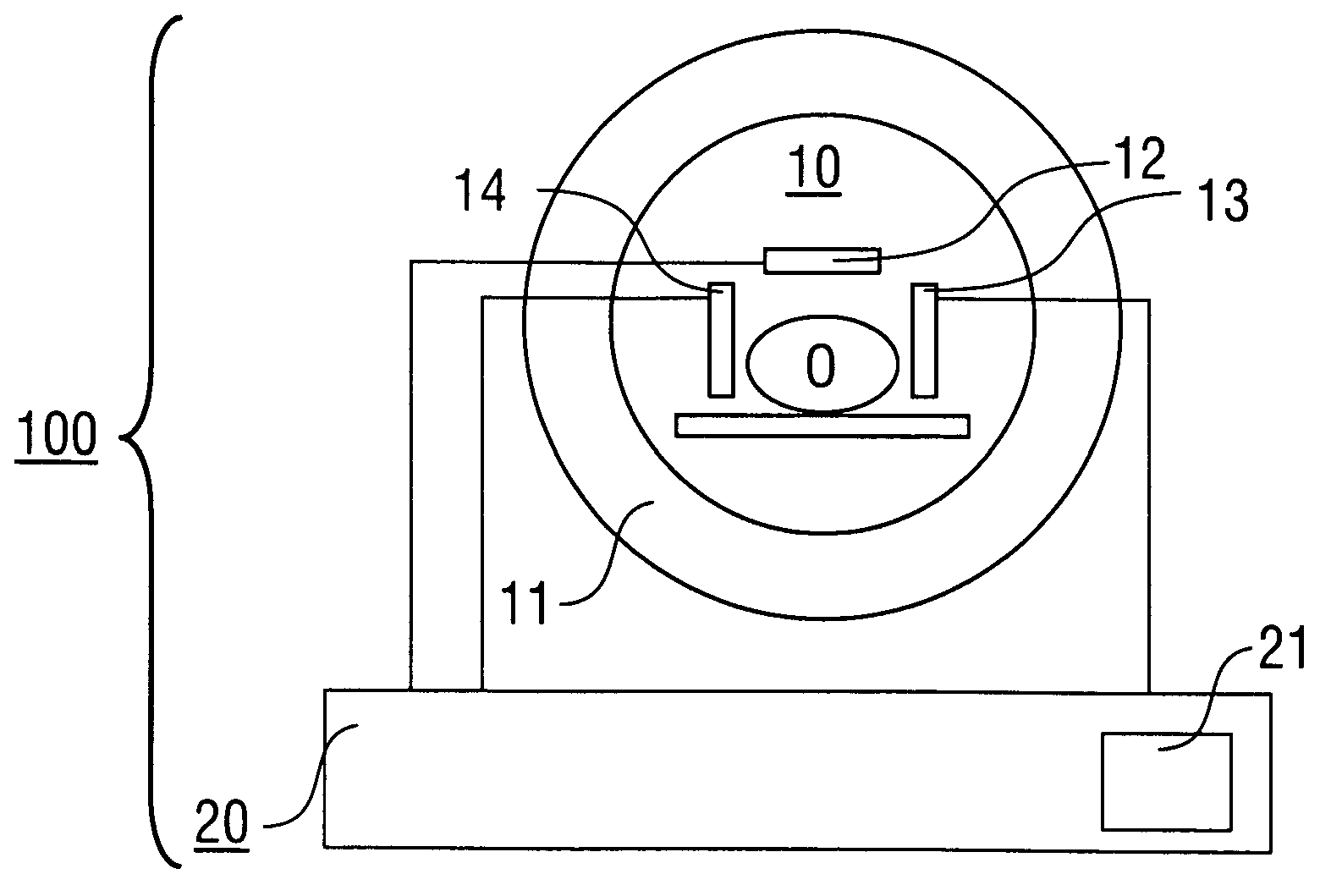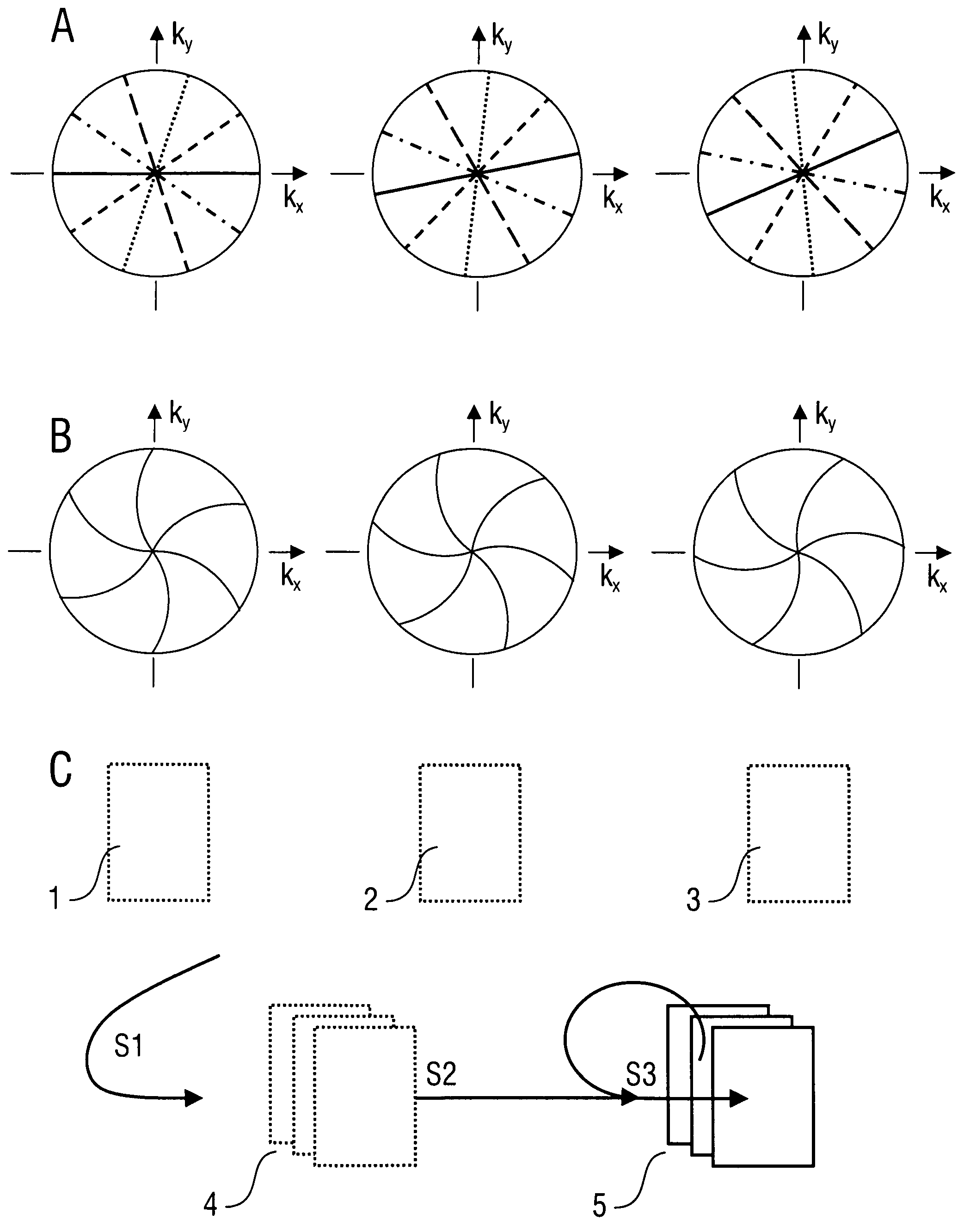Method and device for reconstructing a sequence of mr images using a regularized nonlinear inverse reconstruction process
An image sequence and image technology, applied in the field of MR imaging, can solve difficult and time-consuming problems, and achieve the effects of high image quality, shortened duration, and significant motion robustness
- Summary
- Abstract
- Description
- Claims
- Application Information
AI Technical Summary
Problems solved by technology
Method used
Image
Examples
Embodiment Construction
[0042]Preferred embodiments of the present invention are described below with particular reference to the design of K-space trajectories, the mathematical formulation of canonical nonlinear inversion reconstruction and examples of images obtained using the method of the present invention. Details of the MRI equipment, the construction of the gradient echo sequence and its adjustment for the specific object to be imaged, the implementation of the mathematical formula values using available software tools, and optionally further image processing steps, as long as they are not known from conventional MRI techniques Let me repeat. Furthermore, in the following, exemplary reference is made to parallel MR imaging, where the image raw data comprises MRI signals received by multiple radio frequency receiver coils. It should be emphasized that the application of the invention is not limited to parallel MR imaging, and even a single receiver coil can be used.
[0043] figure 1 The ...
PUM
 Login to View More
Login to View More Abstract
Description
Claims
Application Information
 Login to View More
Login to View More - R&D
- Intellectual Property
- Life Sciences
- Materials
- Tech Scout
- Unparalleled Data Quality
- Higher Quality Content
- 60% Fewer Hallucinations
Browse by: Latest US Patents, China's latest patents, Technical Efficacy Thesaurus, Application Domain, Technology Topic, Popular Technical Reports.
© 2025 PatSnap. All rights reserved.Legal|Privacy policy|Modern Slavery Act Transparency Statement|Sitemap|About US| Contact US: help@patsnap.com



